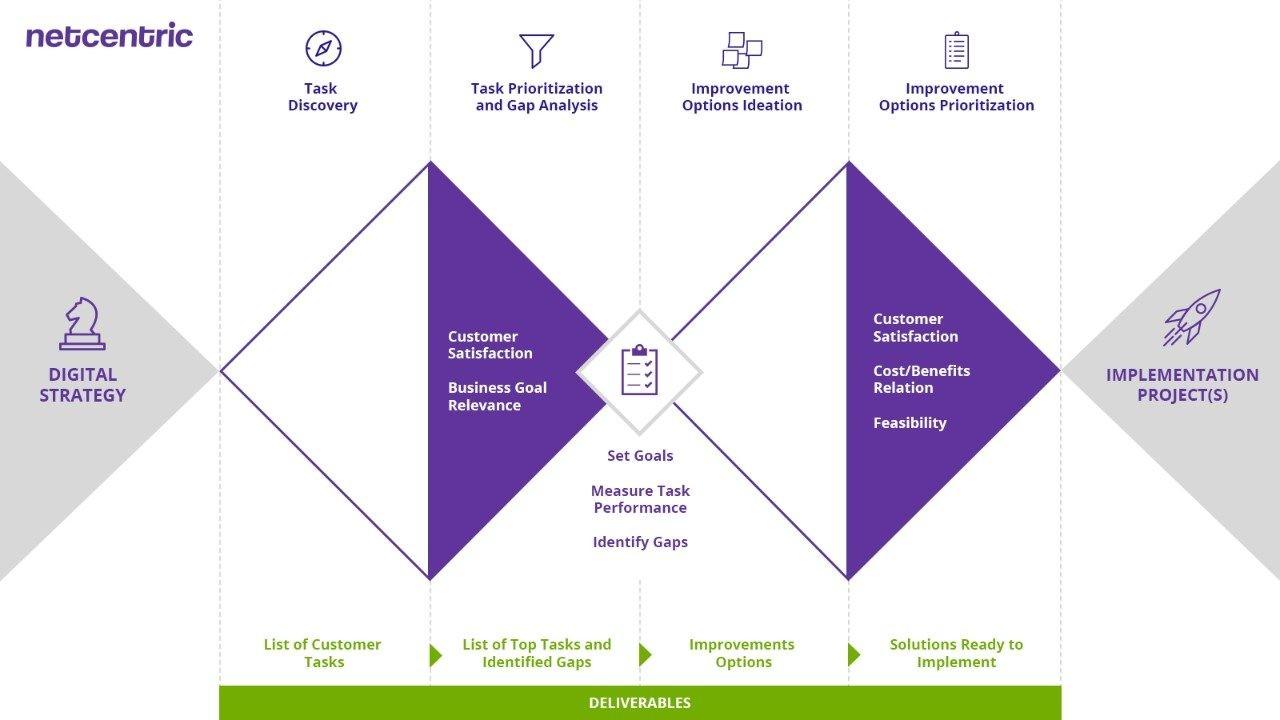Why Customer Experience Management (CXM) Is Not a Project - But a Continuous Process
Creating great customer experience is not a one-time project, but a continuous process.

When you have two companies delivering the same product or solution to the market, one company is likely to differentiate itself over time and win. According to Gartner, this differentiator could be customer experience and, for 2017, 89% of marketers expect customer experience to be their brands’ primary differentiator.
Why is customer experience important?
In today’s crowded market, customers are spoiled for choice with thousands of comparable products, services and brands to pick. They choose brands they experience anytime and anywhere. With so many options available, customer loyalty is tremendously fragile. It is a precious commodity sourced from positive customer experience – a collection of consistent, compelling and personalised experiences a customer has with a brand across all touchpoints throughout the buyer’s journey.
Creating, managing and continuously enhancing unique customer experiences can certainly be a challenge. However, if a brand wants to compete and be successful over time, it must deliver a positive customer experience. Once the brand delivers this, it must harness and maintain customer loyalty. With loyalty, brands are able to reduce costs and increase their revenue. Without it, brands will continue to spend money on acquiring a healthy customer base.
How to create great customer experience

A positive customer experience is essential for business success
1. Understand your customer needs
Brands need to put their customers first and focus on truly understanding their customer needs as well as the challenges they face. This understanding must come from informed research, customer opinion and market insight. Making a guess on customer needs is simply not good enough, and may not yield positive customer experience.
2. Identify customer touchpoints
Brands also need to identify and prioritise all relevant customer touchpoints, and make sure that performance is measured and analysed. For example, if a customer finds a pair of sunglasses that he or she loves in an Instagram post, the brand must account for all potential future touchpoints the customer may encounter. This includes:
- What does the full Instagram profile look like when he or she clicks on the brand page?
- How easy would it be to find reviews for the sunglasses and the link to purchase them online?
- How seamless is the checkout process?
- How proactive are status updates on delivery?
- How quickly and effectively are issues resolved?
- How can the brand capture the customer’s feedback without causing inconvenience?
3. Manage customer interactions across the enterprise
Customer touchpoints do not work in isolation. In order to create positive customer experience and build loyalty, touchpoints need to be managed holistically. This includes any touchpoint (e.g. sales process, business process and company culture) that directly and indirectly interacts with the customer.
Back to the sunglasses example, the website where the customer makes the purchase must harmoniously link to the company’s inventory, order processing, packaging, delivery services and so on. Each group servicing a customer touchpoint must work together to capture and reference data collected in each and every step.
Of course, customer experience across all touchpoints must also tie back to the company culture. Each touchpoint must reflect the mission, values and character of the brand. Being customer-centric is essential and needs to be anchored in the organization.
4. Build a customer-centric organisation
It may take time and effort to build a customer-centric organisation (through an effective customer experience programme that connects all touchpoints), but doing so will result in improved business outcomes across the enterprise. One of the best practices for customer experience management is the creation of a customer-centric culture. While this may seem hard to achieve, simple measures can be taken such as communicating customer experience to all stakeholders, connecting metrics to corporate rewards and developing a strategy that aligns with the corporate strategy.
To stay in the race, customer experience management should be a strategic priority and be allocated to a dedicated ‘owner’ in top management. A Harvard Business Review research shows that leading-edge companies that provide sufficient funding, processes and strategy for customer experience management perform significantly better across all business metrics. This ranges from higher customer retention rates, improved market share and accelerated growth to increased profitability.
5. Improve continuously
Successful customer experience management (CXM) is a continuous process. While maintaining its stance as an integral part of marketing operations, a good CXM model would push for constant improvement based on KPIs. Reinventing and making changes to the marketing, communications and social media strategy should take place when your metrics tell you that a specific channel simply doesn’t add value.
Netcentric’s Double-Diamond Model
To help our clients build customer-centric brands, Netcentric has developed what we call the“double-diamond model”, which aims to continually envision, shape, implement and manage positive customer experiences.

This approach bridges the gap between marketing and technology and helps our clients build a robust and sustainable customer experience management program that connects every relevant touchpoint that matters to your brand. The Double-Diamond Model follows these steps:
- Identify the needs of our customer’s customer
- Prioritise their needs based on customer satisfaction and overall business goal relevance
- Set goals for the desired performance of each related touchpoint
- Measure current performance of related touchpoints based on customer experience, speed and brand compliance (we measure performance using TPI: Task Performance Indicator)
- Identify the performance gaps between customer touchpoints
- Develop options for improvement
- Prioritise improvements based on customer satisfaction, cost/benefit analysis and feasibility
Conclusion
To differentiate from competitors and be successful, brands need to work on making their customers’ experience great. In order to do so, they need to understand customer needs through informed research and feedback. They need to identify and connect every relevant touchpoint (including a company’s vision and values) that directly and indirectly interacts with the customer.
A robust customer experience management programme is essential to compete in today’s world. Once you’ve put that in place, it is important to focus on constantly improving the overall customer experience based on analytics. With long-term vision and focus, brands can offer customers something truly unique and gain sustainable competitive edge. The significance of positive customer experience over a longer period of time cannot be underestimated as it leads to an increased brand experience and, ultimately, improves customer loyalty, which is key to any successful business.